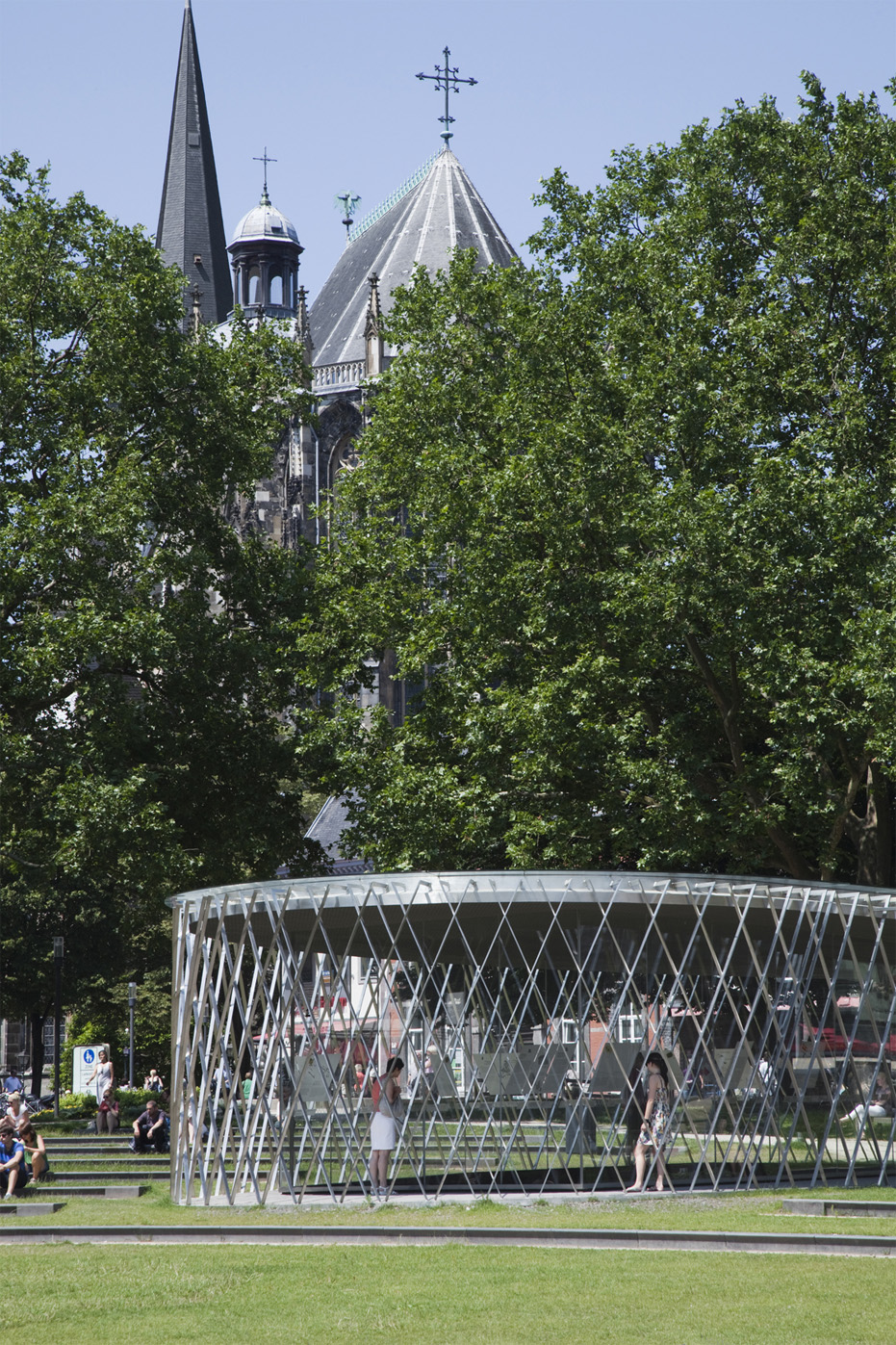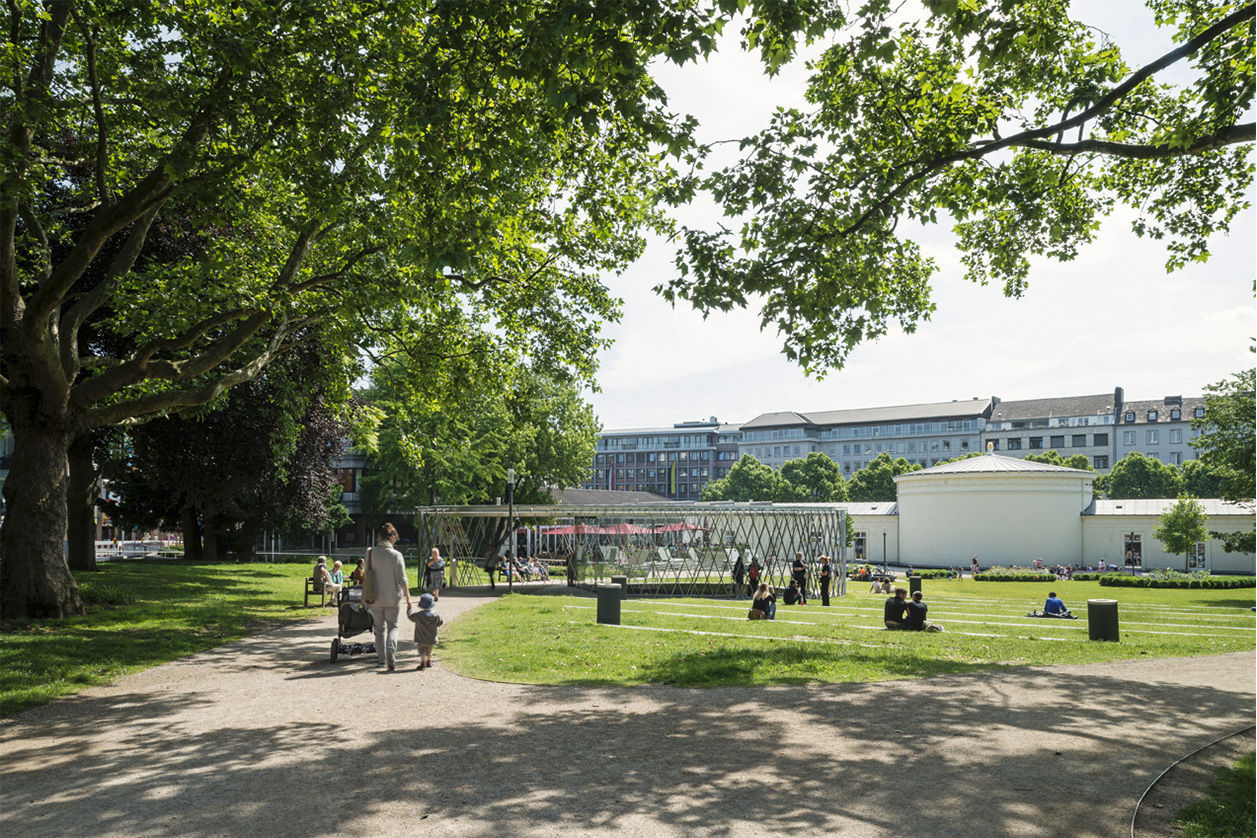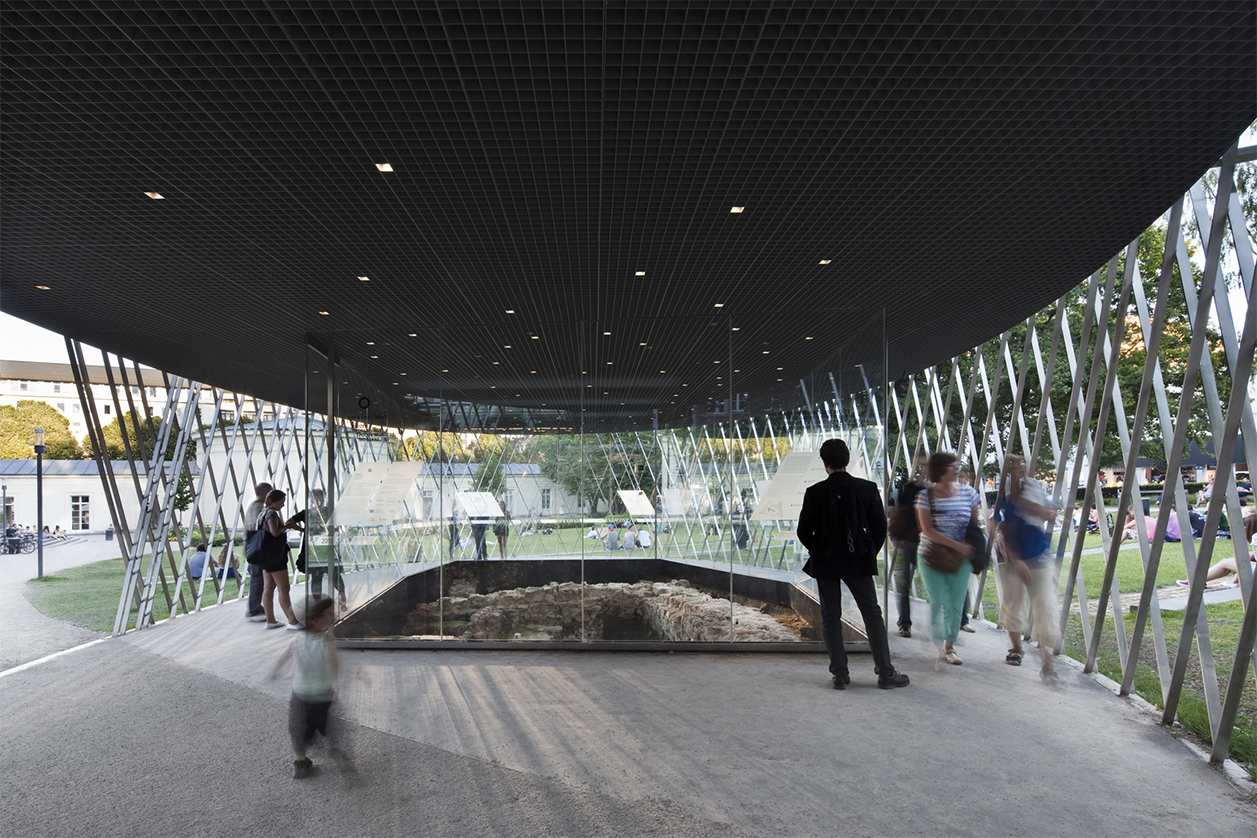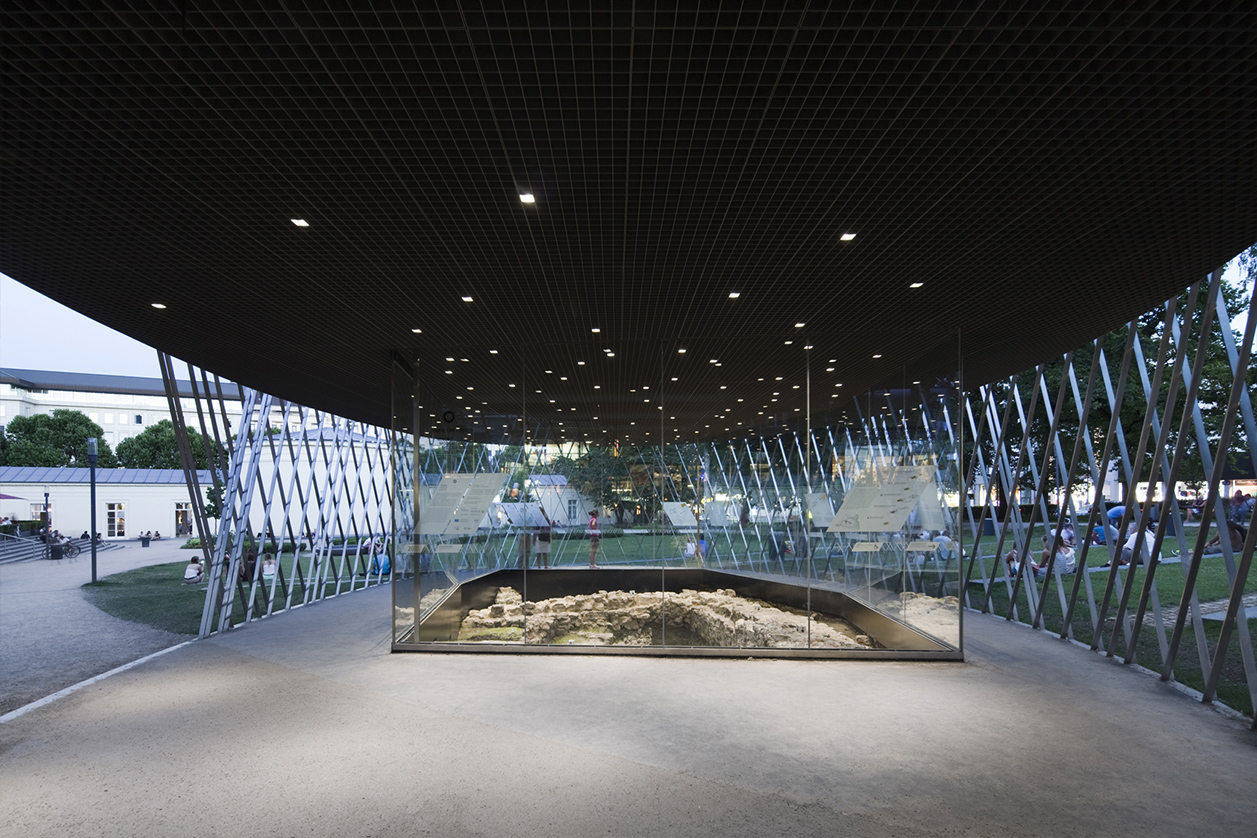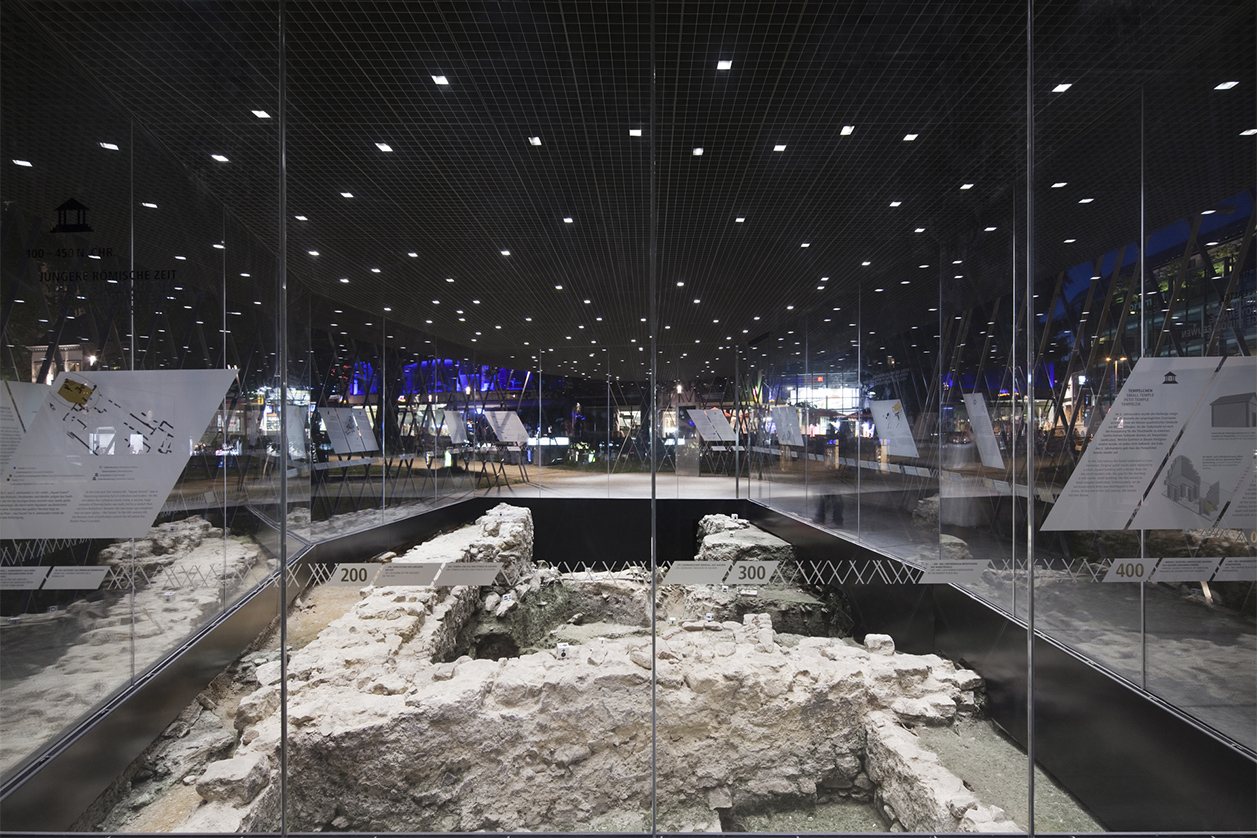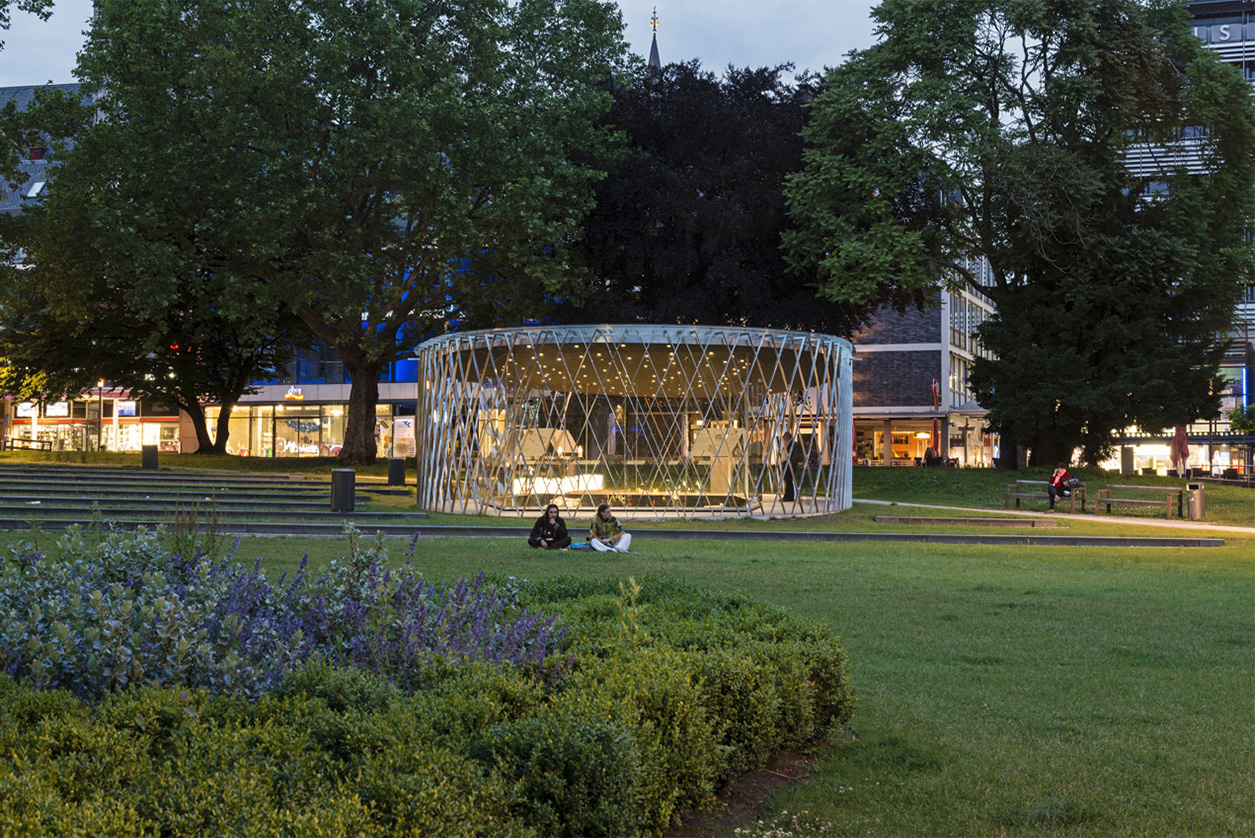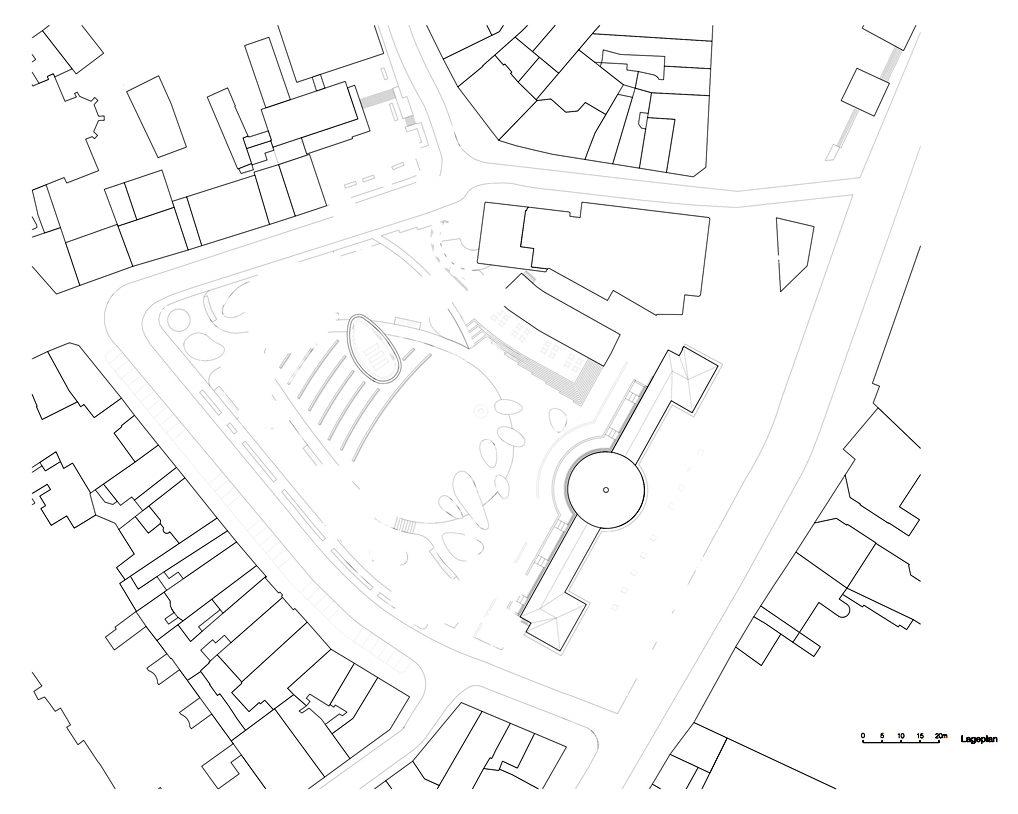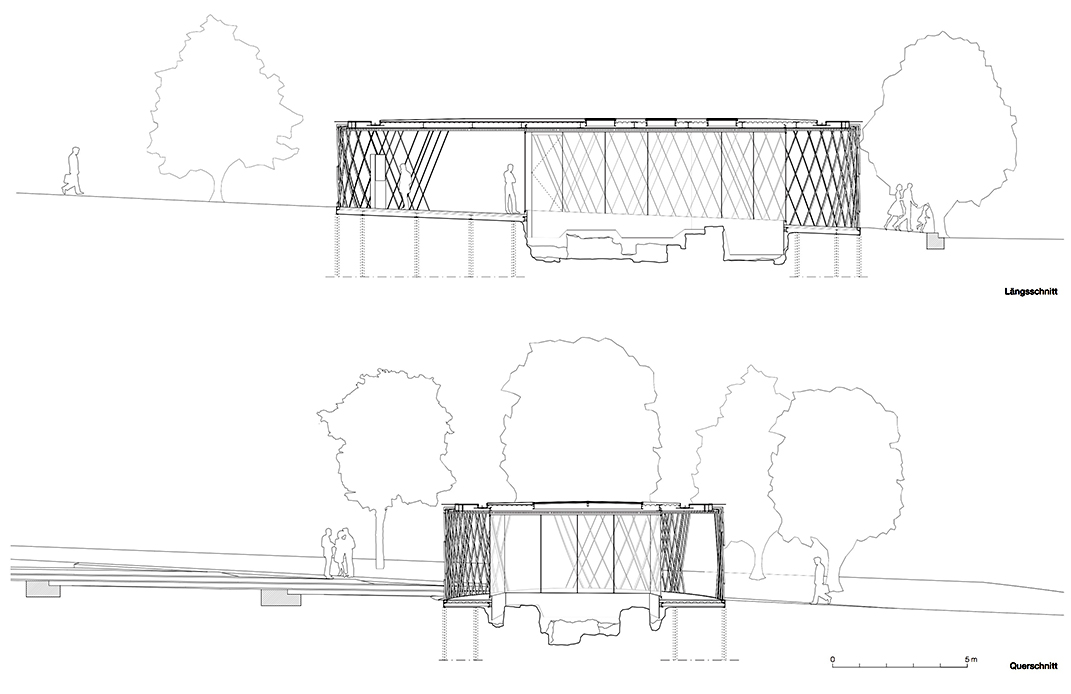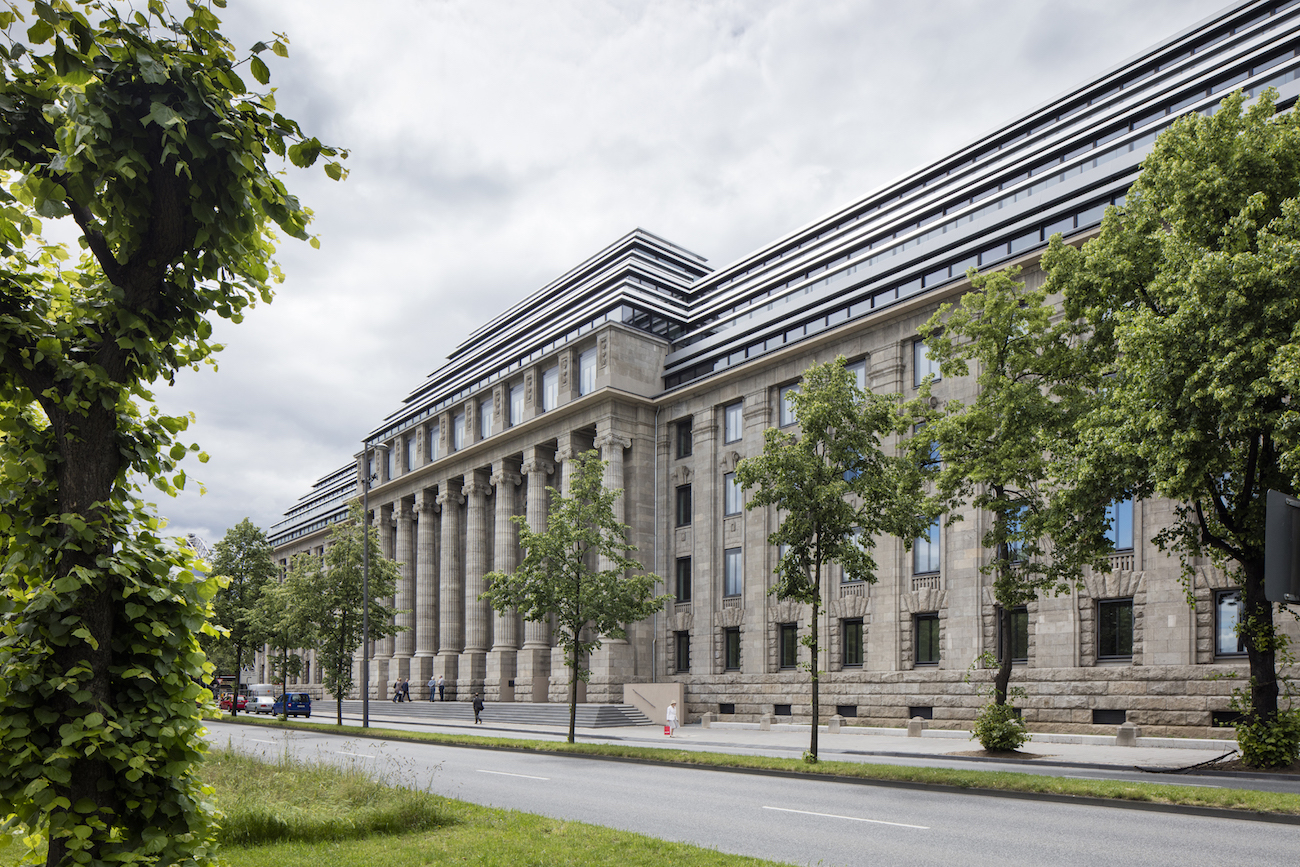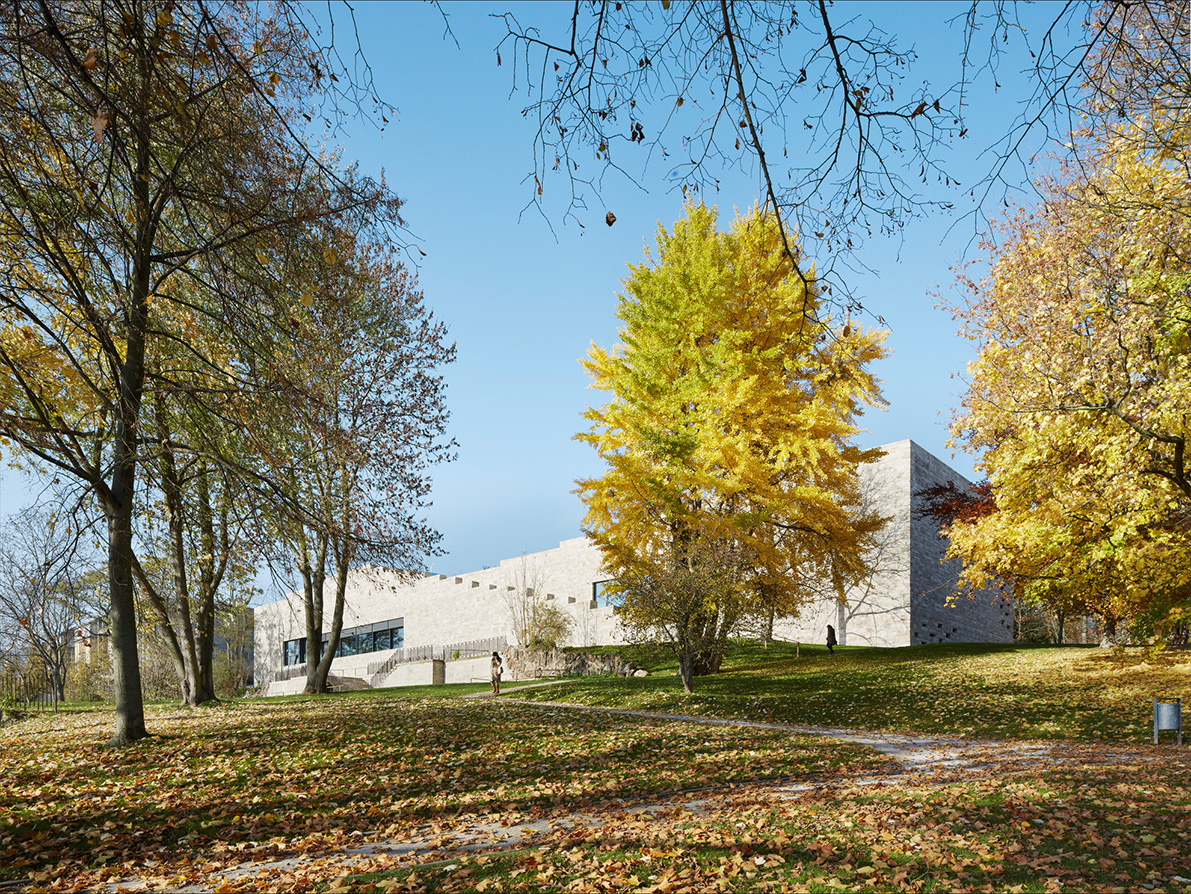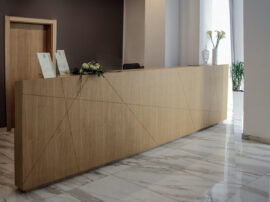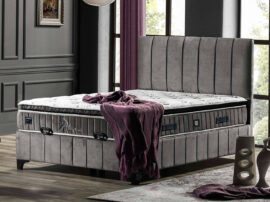With conscious dissociation from the common glass vitrines found throughout the urban context, a stainless steel construction encases the necessary glass enclosure. An exciting in-between zone is thus created, opening up to the surrounding park inviting one to rest or engage with the urban history – a contemplative refuge in the midst of urban bustle. The outside shell consists of two delicate layers of diagonally overlapping steel profiles. The inner vitrine provides the second shell in the form of a glassenclosure. It enables various perspectives of the excavation site, regulates the natural air flow, and protects the spectacular finds. At the same time it serves as a resource of information: a revolving timeline, a site map as well as a compact and clearly arranged illustration of the found structures and artifacts (printed on a light translucent film), informing the visitor without obscuring the vision of the site.
The archaeological pavilion clearly shows how important a small intervention can be to the inhabitants’ identification with their city. The exceptional interest of the public inthe history of their own city has been demonstrated by large numbers of who watched over the excavation tent with great curiosity, the many intrigued passers-by during the construction, and the surge of visitors since the construction was finished. The civic engagement of a company from Aachen who generously supported the construction of the archaeological vitrine (enabling it, indeed, to be built at all) demonstrates a laudable form of cultural sponsoring. The project was mostly financed by the federal state of North Rhine-Westphalia with the firm DSA financing the city of Aachen’s share in the project.
The site is an archaeological jewel in the historical center of the city. In order to make all the excavation results permanently visible, a number of “archaeological windows” can be found throughout the urban area. The archeological vitrine, as a direct structural intervention in the urban space, unveils the historic roots of the city of Aachen, and because of its weather-protected “in-between” room, it has become a common starting point for guided city tours. Furthermore, the vitrine has become¬¬ one of the stations on the “Charlemagne Route” highlighting the traces of Charlemagne throughout historically significant locations in the city. For more detailed information, see route-charlemagne.eu and archaeologische-vitrine.de.
One of the structural challenges was to place the loads without interfering with the excavation site. The construction is mounted on 32 foundation piles (GEWI micropile). A floor grid of wide flange beams (HEB H-section) lies on the foundation piles. On top rests a trapezoidal profiled-metal formwork filled with concrete and covered with mastic asphalt. The outer shell of the pavilion is not only the essential form-giving element of the design but also serves as the primary structure for the column-free pavilion. It is manufactured from laser-cut solid stainless steel profiles.
Altogether 12,3 tons of steel, 8,5 t stainless steel (material V4a 1.4571 and duplex-steel 1.4462) and 150m² VSG-glass were used. Because of the complex demands of the varied materials, the construction was manufactured and assembled off-site in a factory. The construction was then cut in four pieces and transported by heavy-load vehicles to the construction site and re-assembled. In order not to endanger the excavations during the assembly, the site was covered with sand and a temporary scaffolding was erected.
Construction: volume ea 155m², gfa 160m² , volume 590m²
Client: City of Aachen with the support of DSA – Daten- und Systemtechnik GmbH
Architect: kadawittfeldarchitektur
Realization: 2012-2013
Competition: 1st Prize 2009
Project Management: Benjamin Beckers, Jonas Kröber Project Partner: Dirk Zweering
Photographer: Jörg Hempel, Jens Kirchner
